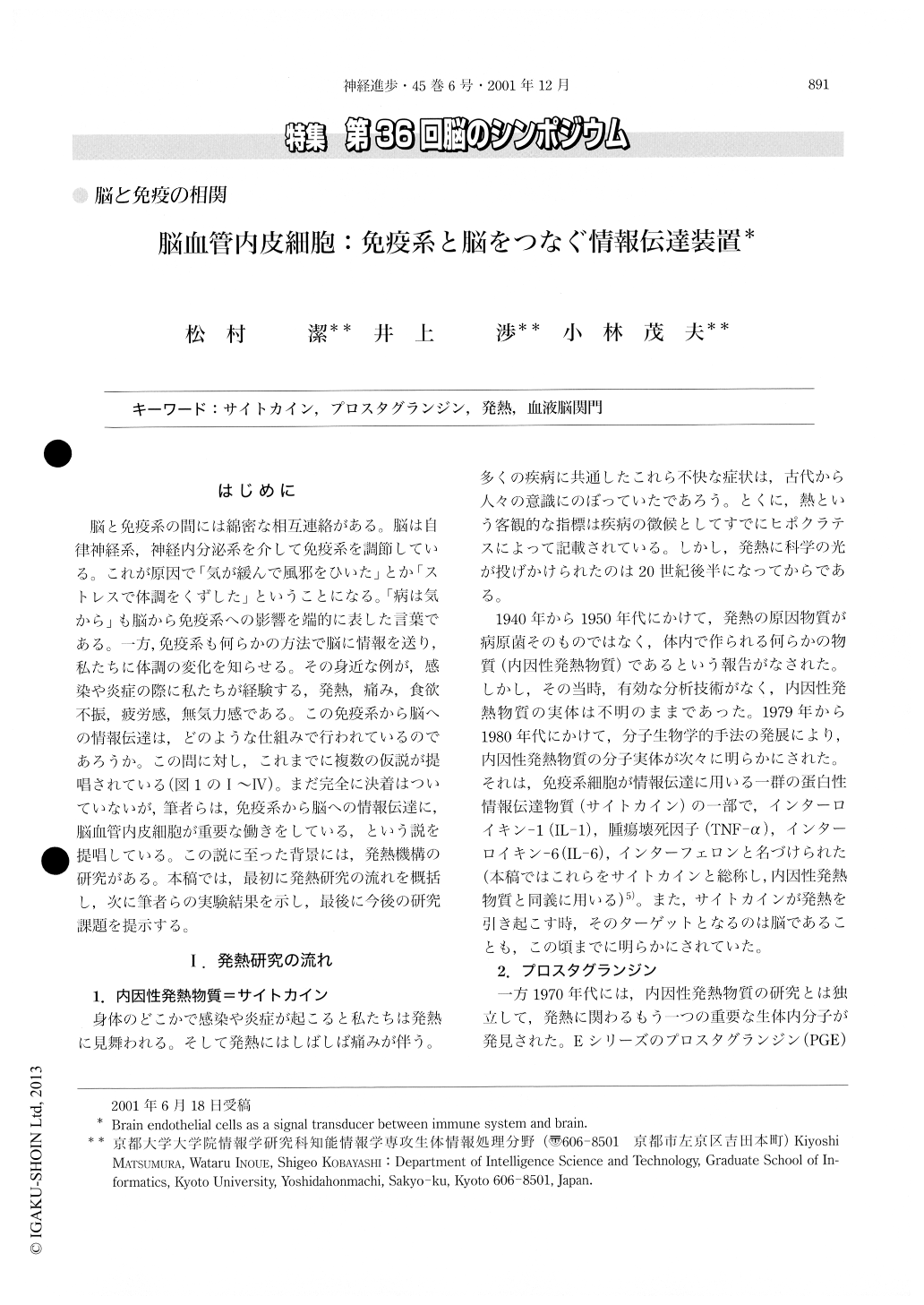Japanese
English
- 有料閲覧
- Abstract 文献概要
- 1ページ目 Look Inside
はじめに
脳と免疫系の間には綿密な相互連絡がある。脳は自律神経系,神経内分泌系を介して免疫系を調節している。これが原因で「気が緩んで風邪をひいた」とか「ストレスで体調をくずした」ということになる。「病は気から」も脳から免疫系への影響を端的に表した言葉である。一方,免疫系も何らかの方法で脳に情報を送り,私たちに体調の変化を知らせる。その身近な例が,感染や炎症の際に私たちが経験する,発熱,痛み,食欲不振,疲労感,無気方感である。この免疫系から脳への情報伝達は,どのような仕組みで行われているのであろうか。この間に対し,これまでに複数の仮説が提唱されている(図1のI~IV)。まだ完全に決着はついていないが,筆者らは,免疫系から脳への情報伝達に,脳血管内皮細胞が重要な働きをしている,という説を提唱している。この説に至った背景には,発熱機構の研究がある。本稿では,最初に発熱研究の流れを概括し,次に筆者らの実験結果を示し,最後に今後の研究課題を提示する。
There has been a long discussion as to how the immune system communicates with the CNS. This question arose in the late 1970s when some cytokines were proven to be the endogenous pyrogens, which are produced by white blood cells, and evoke fever by acting on the brain. Although several hypotheses were proposed, there was no solid evidence for each of them. We challenged this question by focusing on another pyrogenic molecule, pros-taglandin E2 (PGE2) , which is produced in the brain in response to cytokines, and acts as the final mediator of fe-ver.

Copyright © 2001, Igaku-Shoin Ltd. All rights reserved.


